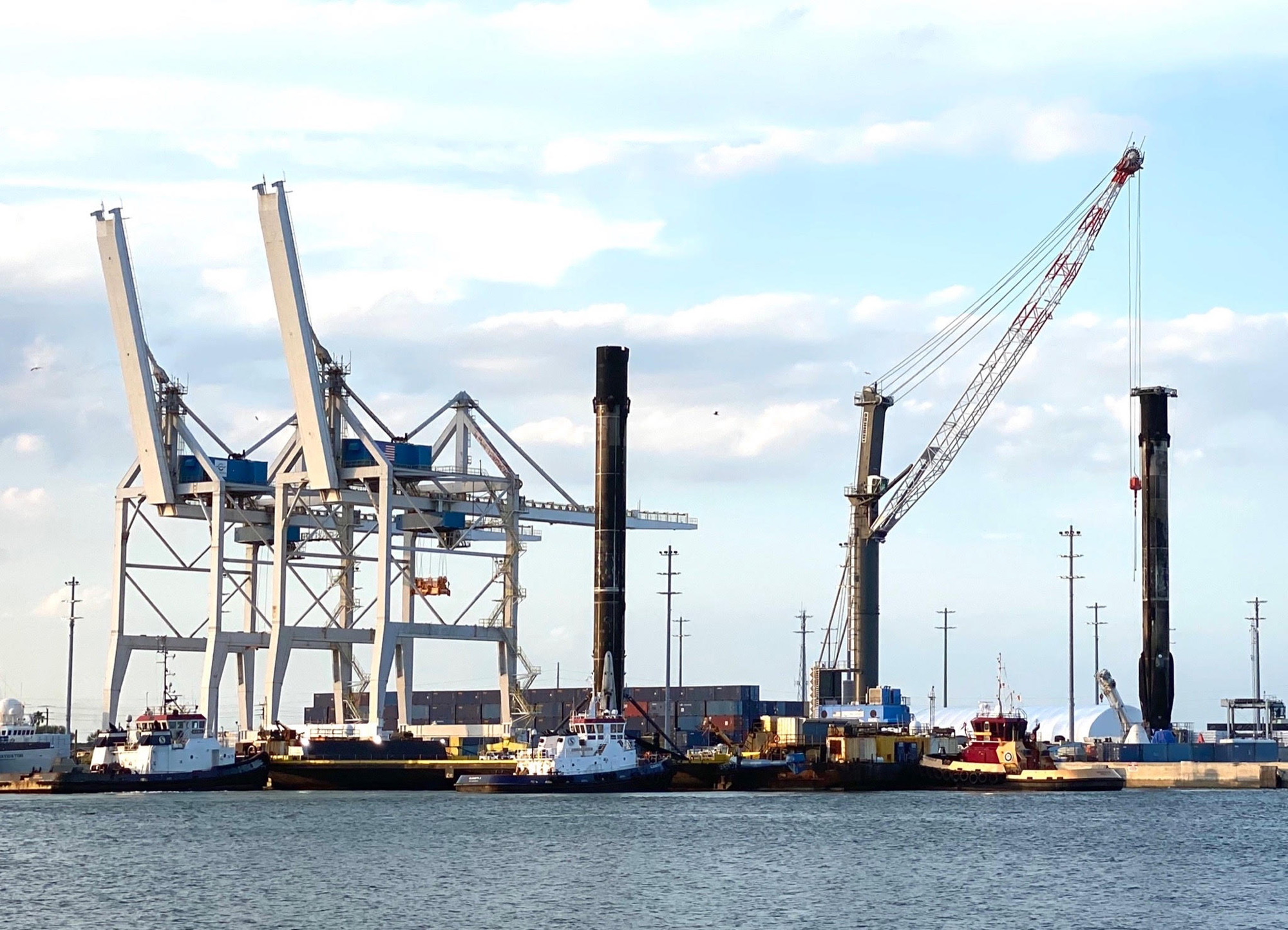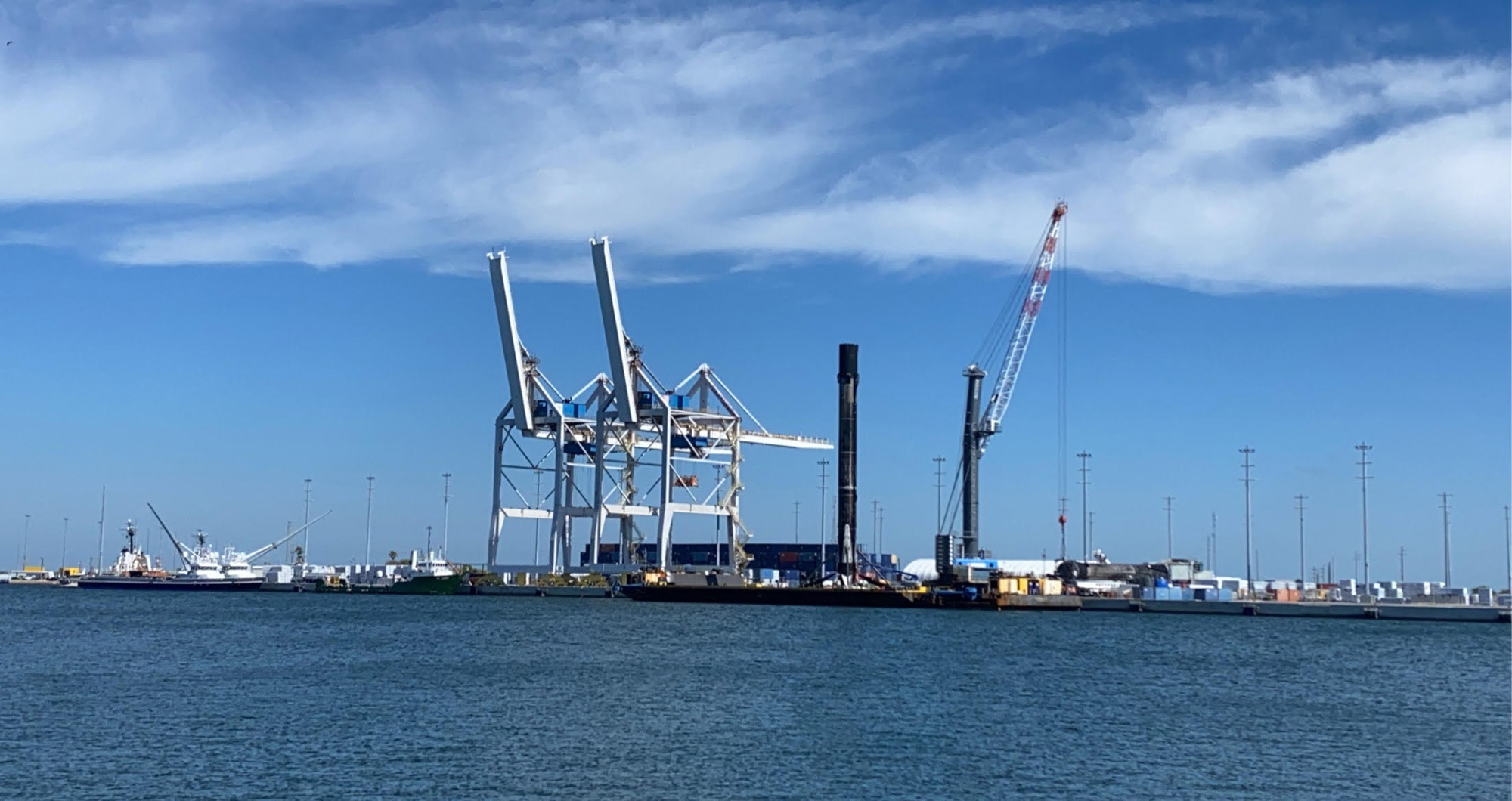See SpaceX's most-flown rocket returns to home port after 9th flight (photos)
CAPE CANAVERAL, Fla. — SpaceX's most-flown rocket, a Falcon 9 booster that has flown a historic nine times has returned home to Florida's Port Canaveral after delivering a batch of Starlink satellites into orbit early last week.
The Falcon 9 rocket — designated B1051 — returned to port on March 16. It appeared on the horizon and slowly sailed into the canal late Tuesday afternoon, heading for its dock atop the SpaceX drone ship "Of Course I Still Love You." The rocket launched 60 SpaceX Starlink satellites into orbit on March 14.
Small groups of onlookers were gathered at the Port Tuesday evening, hoping to catch a glimpse of the booster's return. The spot is not only a popular launch viewing location, but also a prime locale to view returning boats and first stage boosters.
Related: See the evolution of SpaceX's rockets in pictures
A returning booster always draws a crowd, and today was no different. That’s because B1051’s arrival marked a special treat: the first time there was not one, but two boosters in the Port.
The other rocket was B1058, a six-time flier, which blasted off on its own Starlink mission just days before B1051;s historic flight. Perched atop SpaceX's other drone ship "Just Read the Instructions," B1058 sailed into Port on March 13.
At a grassy spot, near the SpaceX docks, a small audience was waiting to capture B1051's triumphant arrival. As the drone ship parked in its slip, cameras clicked and excited onlookers chattered about the booster's sooty exterior.
Breaking space news, the latest updates on rocket launches, skywatching events and more!
The booster's appearance, once stark white, was marred — scorched and sooty from its multiple trips to space and back— especially when compared to B1058.
After six flights, B1058's NASA worm logo, once bright red, now appeared black, while the typically blue SpaceX logo on B1051 was barely visible amongst the scorch marks.
As SpaceX's most-flown booster, B1051, could make its 10th flight in the near future — a milestone SpaceX has been working toward.
When SpaceX debuted its upgraded Falcon 9, company founder and CEO Elon Musk said that each booster could fly as many as 10 times with little-to-no refurbishments in between. That's due to a series of upgrades added to the vehicle in 2018, which includes improved engines, a more durable interstage (a connector between the first and second stages), titanium grid fins and a more robust thermal protection system.
This combination allows Falcon 9 to hold up better against the stresses of launch. With each recovery, SpaceX has learned more and more about launch wear and tear.
Now that the Falcon 9 booster is back in port, it will be off-loaded and then prepped for travel. That is as soon as B1058 is moved. That booster went horizontal on Wednesday so that crews could transport it and move on to B1051.
SpaceX's twin fairing catchers — GO Ms. Tree and GO Ms. Chief — are still in Port, armless, as they undergo some sort of maintenance. Right now SpaceX is relying on two of its Dragon recovery boats (GO Searcher and GO Navigator) to scoop fairings out of the ocean.
Follow Amy Thompson on Twitter @astrogingersnap. Follow us on Twitter @Spacedotcom or Facebook.

Amy Thompson is a Florida-based space and science journalist, who joined Space.com as a contributing writer in 2015. She's passionate about all things space and is a huge science and science-fiction geek. Star Wars is her favorite fandom, with that sassy little droid, R2D2 being her favorite. She studied science at the University of Florida, earning a degree in microbiology. Her work has also been published in Newsweek, VICE, Smithsonian, and many more. Now she chases rockets, writing about launches, commercial space, space station science, and everything in between.




